Department of Materials Science and Engineering, National Tsing Hua University, 30013 Hsinchu, TAIWAN
Empowering Bilayer MoS2 by Engineered Plasmonic Nanostructures for Optoelectronic Applications
Recently, extracting hot electrons from plasmonic nanostructures and utilizing them to enhance the optical quantum yield of 2D transition-metal dichalcogenides (TMDs) have been topics of interest in the field of optoelectronic device applications, such as solar cells, light emitting diodes, photodetectors and so on. The coupling of plasmonic nanostructures with nanolayers of TMDs depends on the optical properties of the plasmonic materials, including radiation pattern, resonance strength, and hot electron injection efficiency. Herein, we present three cases of intensifying the light-matter interactions between nano-scale plasmonic structures and a large-scale, transfer-free bilayer MoS2. These methods include 1. unusual quadrupole gap plasmons (QGPs) in the tailored nanoantennas [1], 2. four different morphology-controlled plasmonic nanoparticles, and 3. engineering the bandgap of the bilayer MoS2 with the localized strain from the plasmonic nanostructures. By introducing the plasmonic effects aforementioned into the large-scale, transfer-free bilayer MoS2, our experimental results demonstrate not only excellent optoelectronic response, but also practical applications in hydrogen evolution reaction, photodetection and others.
References
- Pavithra Sriram, Dong-Sheng Su, Sheng-Wen Wang, Arumugam Manikandan, Arun Prakash Periasamy, Huan-Tsung Chang, Yu-Lun Chueh and Ta-Jen Yen*, “Hybridizing Strong Quadrupole Gap Plasmons using Optimized Nanoantennas with Bilayer MoS2 for Excellent Photoelectrochemical Hydrogen Evolution”, Advanced Energy Materials (8), p.1801184, (2018)


























